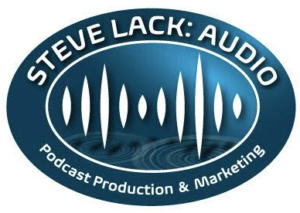Dec. 4, 2013
By Libby Austin
 I arrived early for this first keynote to hear about NASA’s use of 4K imagery. NASA works on the cutting edge of scientific image gathering and workflow, so their processes can serve as models for other government agencies.
I arrived early for this first keynote to hear about NASA’s use of 4K imagery. NASA works on the cutting edge of scientific image gathering and workflow, so their processes can serve as models for other government agencies.
Rodney Grubbs, chairman of NASA’s DTV Working Group and a principal investigator for the agency’s advanced video projects, talked about how and why 4K images are important to NASA’s mission, and the steps being taken to future-proof them.
Grubbs joined the Space Agency as a motion picture photographer at the Marshall Space Flight Center while he was still a student at the University of Alabama. He has worked there ever since, adding roles as film editor, director, colorist, and producer before becoming lead for NASA’s Digital TV Implementation efforts. (http://www.nasa.gov/offices/oce/pmchallenge/program/PT_prt.htm)
He might have started out as a film/video person- but Grubbs sounds like he could be an engineer. Maybe that is because he helped spec out and deploy the increasingly resolution-rich cameras that go up to the International Space Station and went up in Space Shuttles. His projects include the first-ever live HDTV program from a spacecraft.
Grubbs began his keynote address at GV Expo by pointing out that 4K for video and 4k for Digital Cinema are different standards. 4K UHDTV (UltraHigh Definition TV) or 2160p is 3840 x 2160 pixels, while Digital Cinema 4k is 4096x 2160. Basically, 4K/k is HD doubled. 8K is already in the works in Japan, Grubbs noted.
Grubbs also lead work on several of the imagery enhancements used to determine the cause of the 2003 Columbia Space Shuttle accident. That launch was documented by both film and video cameras, said Grubbs, but ultimately, “The camera site that had the best view yielded just 17 fields of the foam strike, so with NTSC that would equal to 8 1/2 frames of video @ 30 fps.”
Columbia’s destruction put NASA’s interest in using high-speed, high-res cameras into warp speed. The space agency began using Red One cameras to record launches. Now, in the 3D era, launches are shot panoramically, with five stereo pairs of 4K Red Epic cameras. However, “Red isn’t the only 4K camera we’ve experimented with, says Grubbs. “We’ve used Phantom, Photron and other brands as well. We use Panasonic 720P HD box cameras for video.”
Grubbs explained that recording rocket launches is challenging. First, the the ignition is inherently bright– whiter than video white. A capture medium has to have dynamic range- bright whites and deep blacks.
Also, launches create a potentially mortal shock wave. Spinning discs can lock up under these conditions. Solid solid state, or flash drive cameras are the answer.
For an agency that needs reliable color spectra to interpret images, the digital Bayer artifacting that causes a color shift from white to a red/purple, may have hindered early analysis on the the Columbia investigation.
Project Manager for NASA TV’s conversion to an all-digital multi-channel system, first to SD in 2005 and to HD in 2009, Grubbs also discussed broadcasting and playback concerns that can come with variable frame rates and shallow depth of field photography.
The huge file sizes of 4k and 4K footage can make it hard to edit, distribute and display. Grubbs joked that sometimes the best transfer solution was a form of sneaker net.
While for him the retirement of the Space Shuttle program was “like a funeral,” Grubbs continues his mission to get better and better images of the space program. He leads an International Working Group to establish standards for space video applications, works on providing HDTV capabilities for future exploration missions and to establish NASA standards for their website videos.
http://www.nasa.gov/offices/oce/pmchallenge/program/PT_prt.htm
And NASA is poised to lead imaging technology through 8K and beyond.
About the Author:

Elizabeth McGraw-Austin is Principal Creative at zpvmedia, a full service video production company that specializes in historical, educational and environmentally aware documentaries. e.mcgrawaustin@gmail.com

















